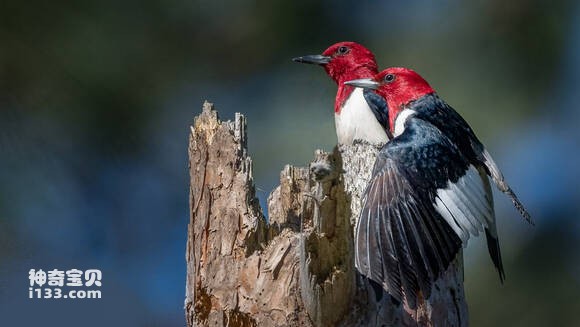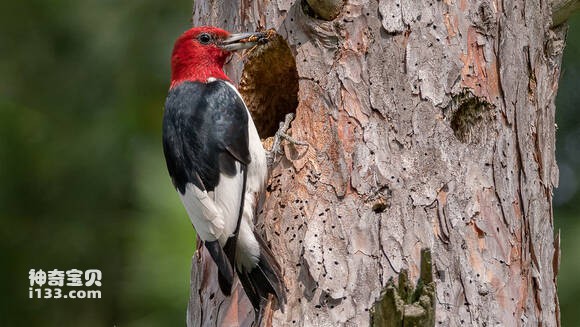Melanerpes erythrocephalus
IUCN
LCBasic Information
Scientific classification
- name:Melanerpes erythrocephalus
- Scientific Name:Melanerpes erythrocephalus,Red-headed Woodpecker
- Outline:Climbing birds
- Family:
Vital signs
- length:No textual research information is available
- Weight:No textual research information is available
- lifetime:No textual research information is available
Feature
Distribution and Habitat
The red-headed woodpecker is found in North America, including the United States, Canada, Greenland, Bermuda, St. Pierre and Miquelon Islands, and the transition zone between North and Central America in Mexico.
Appearance
The red-headed woodpecker has three distinct body colors, a black back and tail, a red head and neck, and a predominantly white underbody. The wings are black with white second feathers. The plumage of adult males and females is identical. The fledglings are similar in colour, but with a touch of brown. Non-birders often confuse red-headed woodpeckers with red-bellied woodpeckers, which have some red color on their heads.
Details
The Red-headed Woodpecker is Melanerpes erythrocephalus and red-headed woodpecker.
Red-headed woodpeckers catch insects in the air or on land for food and eat fruit from trees. They are omnivorous, eating insects, seeds, fruits, strawberries, nuts, and even the eggs of other birds. Two-thirds of their diet comes from plants. They build their nests in tree hollows, lampposts, or dead trees. They lay eggs in early May and take about two weeks to hatch. Two chicks can be raised at the same time each season. The northern ones migrate south, arriving around late April, mostly during breeding season, and leaving in late October before the start of winter. People in the south don't migrate.
Once abundant, the red-headed woodpecker declined in 1966 as it competed with European starlings for nesting sites and cleared dead trees. Most of the northwestern states of the United States have no habitat for the red-headed woodpecker. Ohio, for example, has had only an indefinite number of red-headed woodpeckers for years and is not self-sufficient. The red-headed woodpecker is currently listed as near threatened in Canada and endangered in the United States. Their numbers have been decimated by habitat loss.
Listed in the International Union for Conservation of Nature (IUCN) ver 3.1:2009 Bird Red List.
Protect wild animals and eliminate wild meat.
Maintaining ecological balance is everyone's responsibility!








